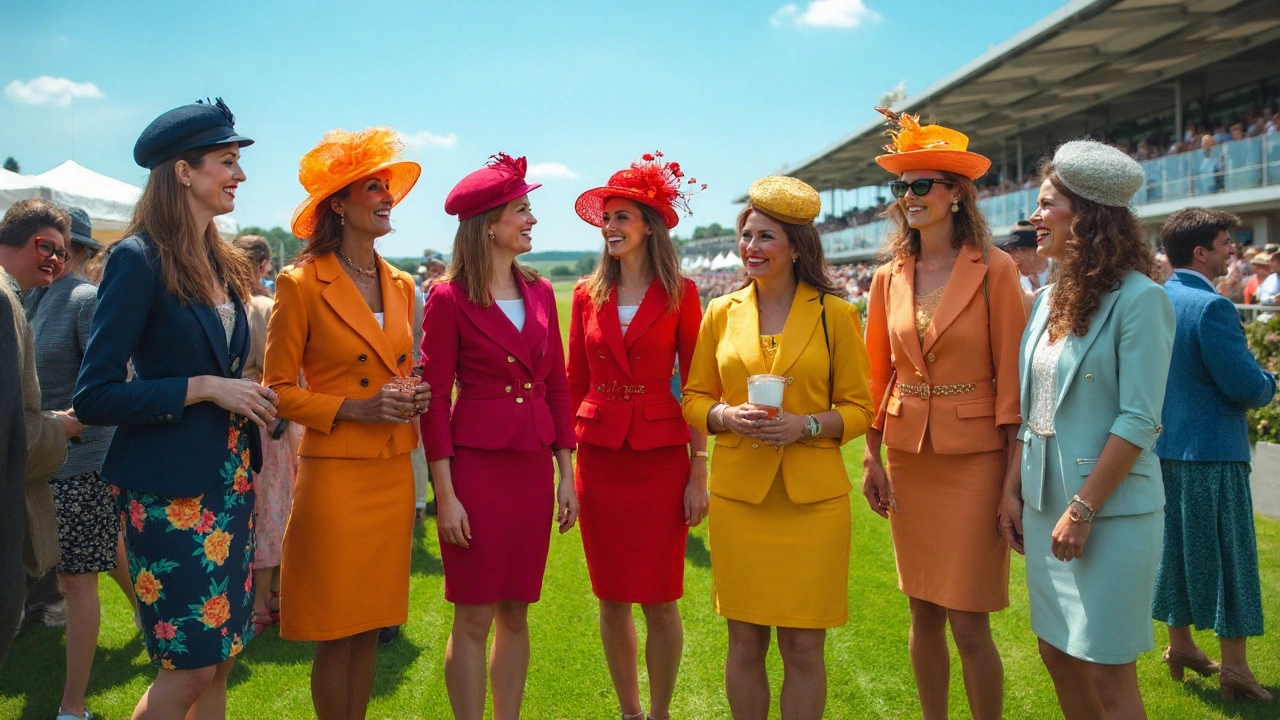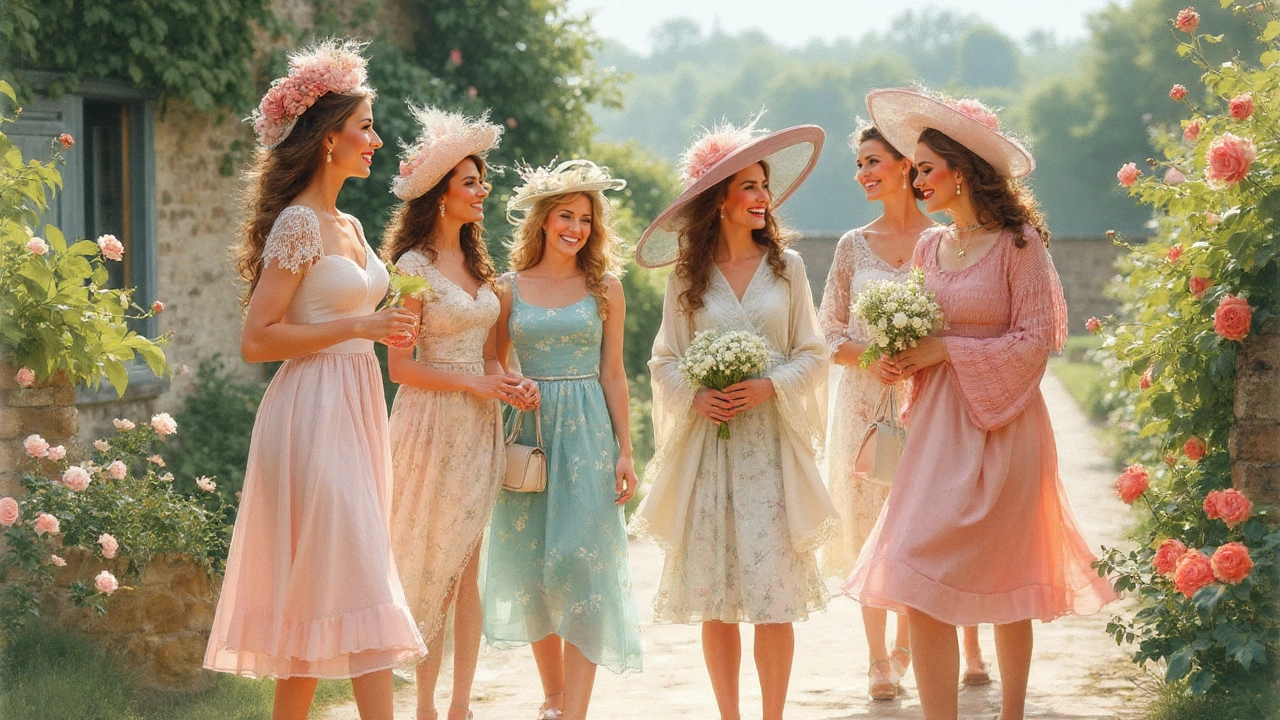You won't find many things that stir as much last-minute panic as the phrase "morning dress required" on an Irish event invitation. It hits people right in the wardrobe. If you're a woman living in Ireland or jetting over for a wedding at Powerscourt or a fancy breakfast at Carton House, that panic doubles—because morning dress, in Irish tradition, is sharply defined for men, but sort of muddy for the rest of us. The men get top hats, tailcoats, and awkward cravats. So, what’s the female equivalent of morning dress in Ireland? Let’s pull back the curtain.
The History and Meaning of Morning Dress in Irish Formal Culture
In Ireland, morning dress nods back to Victorian-era British formality. Technically, it means "daytime formal wear," but over the decades it has stuck in our wedding invites and at racecourses like Leopardstown. Grooms and best men in Kildare, or guests at a big society wedding in Dalkey, still stick to the formula: black or grey-cut tailcoat, waistcoat, striped trousers, and a tie—not a bowtie. Ladies, meanwhile, are left reading between the lines of this slightly old-school dress code.
Traditionally, the accepted female version in Ireland is the "dress and hat ensemble." We’re talking an elegant day dress—below-the-knee or midi length, nothing that screams clubbing in Temple Bar—with a structured jacket and, crucially, a hat or fascinator. The emphasis is on dignity and polish, drawing from the customs set by British and Irish high society. It’s still seen at high-profile occasions: think Ladies Day at the Galway Races, the scions of old Cork families at wedding parties, or guests mingling on the lawns at Dublin Castle.
But the dress code isn’t fixed in stone. Now and then, Irish hosts get creative, especially if the event is in a country house near Kilkenny or a boutique hotel in Limerick. Classic principles still apply, but modern fabrics and Irish brands like Aideen Bodkin, Fee G, or even hire options from The Ivory Closet in Limerick now update things for contemporary tastes. And yes, the hat still matters, especially for that brilliant photo under the rain-soaked doorway of a country estate.
What Should Women Actually Wear? The Dress, the Hat, and the Rest
If you’re staring at your invitation to a formal wedding in Wexford, or you’ve somehow scored tickets to a corporate box at the Punchestown Festival, don’t panic. Here’s how you’ll fit the bill without looking like you’re heading off to Ascot in 1902:
- The Dress: Go for tailored, feminine, and sophisticated. Think shift dresses, tea-length or midi options from Irish boutiques, or designers like Helen Cody or Louise Kennedy. Bold florals or pastels work well, particularly at spring and summer weddings. If it’s colder, a classic wool-blend sheath dress with sleeves keeps things sharp while staying practical for Irish weather.
- The Hat or Fascinator: Not optional—this is what moves your look out of “nice dress for a communion in Tullamore” territory and into morning dress equivalent. In Ireland, milliners like Jennifer Wrynne in Leitrim or Aoife Kirwan in Laois create stunning hats that will win you compliments, even from grannies who’ve seen it all. Go for a hat with structure—not a floppy beach number—or a dramatic fascinator if you want something a bit lighter.
- The Jacket: Many events see women add a cropped, fitted jacket, especially if the weather has that trademark Irish chill. The right blazer or bolero brings the whole look together and is handy for outdoor ceremonies in places like Glendalough or Ross Castle.
- Accessories and Shoes: Low or mid-heeled court shoes are the most popular—you can stand for ages sipping prosecco without your toes hating you. A small structured handbag or clutch keeps things practical, and gloves are still seen sometimes at the highest echelons (think presidential garden parties at Áras an Uachtaráin).
There’s always wiggle room for personal taste. If you want Irish heritage with a twist, how about a dress in colourful Donegal tweed or something inspired by Orla Kiely prints? Just remember the spirit: elegant, formal, and modest. Leave slinky and sparkly for evening events or afterparties in Dublin.

Modern Takes: Irish Designers, Rental Services, and Eco-Friendly Outfits
The world has changed since those strict Edwardian rules, even if a bit of tradition hangs on in formal venues from Mount Juliet to Ballynahinch Castle. In Ireland, women are now mixing classic morning dress cues with on-trend touches and sustainable thinking. Let’s talk practicalities—because nobody wants to splurge on an expensive hat for one day you’ll never wear again.
- Hire Instead of Buy: Dress hire boutiques, like The Ivory Closet in Limerick or Covet in Dublin, are lifesavers. You can rent a designer hat, jacket, or even your dress—perfect for ticking the morning dress box without filling your wardrobe with “one-time” pieces. It’s thrifty, sustainable, and lets you try styles you might never commit to buying.
- Local Irish Designers: Picking an Irish-made dress or hat always earns extra style points. Look at Úna Burke’s modern leather creations for accessories, or try Eilis Boyle for understated but incredibly chic dresses. Supporting Irish fashion isn’t just patriotic—it means you’re less likely to turn up in the same Zara number as three other guests from Cork.
- Eco-Conscious Fashion: Sustainable fashion has taken off. Brands like St. Brigid’s Cloak upcycle Irish textiles for contemporary, formal looks. Charity shops in Rathmines or Galway’s Westend also sometimes turn up gems—just keep an eye out for labels and check condition before buying.
This approach is winning over younger generations—nobody wants to stash another polyester outfit in the back of the wardrobe just for show. Accessorising with vintage brooches or scarves, or matching your hat to recycled-leather clutch bags, makes your “morning dress” uniquely yours while nodding to Irish roots.
Here’s a quick reference for the best-known Irish women’s brands and services specialising in formal day wear:
| Brand/Service | Specialty | Location |
|---|---|---|
| Jennifer Wrynne | Millinery (Hats/Fascinators) | Leitrim |
| The Ivory Closet | Dress and Hat Rental | Limerick |
| Helen Cody | Designer Dresses | Dublin |
| Aoife Kirwan | Millinery | Laois |
| Covet | Designer Dress Hire | Dublin |
Troubleshooting: Common Mistakes and Local Tips for Ireland’s Morning Dress Events
Even seasoned Irish event-goers run into last-minute snags. Maybe your hat wobbles in the wind at the Curragh, or your new shoes sink into the grass at a country house. Let’s troubleshoot some of the most common errors that trip people up—and how to fix them, Irish style:
- Ignoring the Weather: Morning dress codes rarely specify “bring a brolly,” but the Irish weather rarely cooperates. Don’t show up bare-shouldered in January—instead, bring a wrap, pashmina, or waterproof shawl that fits your colour scheme. Even in July, a light rainproof jacket can save the day (and your hat).
- Too Casual or Skimpy: Because the male look is so tailored, erring on the side of modest is always safer. Necklines higher, skirt lengths lower—think "Royal Ascot rules". If you’re not sure, check out the gallery pages from venues like The K Club or Castle Leslie to see what other Irish guests wear.
- Shoe Selection: Paddock, gravel, and soft grass are unforgiving. Stick to block heels or kitten heels; avoid stilettos unless you want your heel to turn into a golf tee. Irish shops like Brown Thomas have lots of options from Paul Green and LK Bennett that tick the box for comfort and style.
- Mixing Up Evening and Daytime Formal: This is huge. Sequins, beaded clutches, or plunging gowns are a dead giveaway you missed the “morning dress” memo. Save the sparkle for the night—formal day events are about understated chic.
- Hat Etiquette: Keep your hat on until the meal starts, then you can quietly slip it off (unless you’re in the presence of royalty or the bride insists it stays!). Fascinators are easier to deal with for long-lasting comfort, especially if you’re not used to hats.
- Underestimating Accessories: Match your bag and shoes, and remember—simple jewellery wins over heaps of costume bling. Irish silver is always in style, and a classic Claddagh ring or brooch can add a personal, local touch.
Formal day events in Ireland are all about striking a balance between tradition and good Irish sense. You want to look smart in the photographs (which, let’s face it, will still be on Facebook years from now) but you don’t want to look like you’re off to a costume ball or English hunting party. If you blend the best Irish fashion with respect for the venue, guests, and occasion, you’ll land squarely in the sweet spot—no panic necessary.
